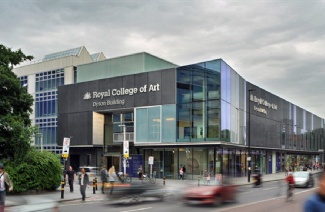2016年7月2日
托福阅读词汇题:
assume=take on integrated=coordinated furnished= equipped unceasing=continually
exploited=use implication=consequences attribute to=responsible for allow for=make possible
Critical=essential
第一篇:
题材划分:历史类文章
主要内容:
4到5世纪时罗马的交通。古罗马的交通很发达,让军队可以在边境间转移,城市相连,农村货物可以运到城市销售。还要求各个城市给罗马的official提供交通便利。但是陆上运输太贵了,而且不能运大宗货物,举了个例子,几百里路下来被驮着的粮食都被马吃光了。商人只能做小宗价值高的生意。海上交通发展起来了,很便宜,还能运大宗货物。罗马会从周边国家进口粮食供自己国家人出。罗马的海上运输对许多贸易港产生了影响,使它们发展得比内陆城市还大。
解析:话题很简单,而且TPO里有相似度很高的一篇文章,只是第一篇相对而言比较难进入状态,所以调整好自己的心态最重要。
相似TPO练习推荐:
TPO19- The Roman Army's Impact on Britain
相关文章:
The Roman Army's Impact on Britain
In the wake of the Roman Empire's conquest of Britain in the first century A.D., a large number of troops stayed in the new province, and these troops had a considerable impact on Britain with their camps, fortifications, and participation in the local economy. Assessing the impact of the army on the civilian population starts from the realization that the soldiers were always unevenly distributed across the country. Areas rapidly incorporated into the empire were not long affected by the military. Where the army remained stationed, its presence was much more influential. The imposition of a military base involved the requisition of native lands for both the fort and the territory needed to feed and exercise the soldiers' animals. The imposition of military rule also robbed local leaders of opportunities to participate in local government, so social development was stunted and the seeds of disaffection sown. This then meant that the military had to remain to suppress rebellion and organize government.
Economic exchange was clearly very important as the Roman army brought with it very substantial spending power. Locally[1] a fort had two kinds of impact. Its large population needed food and other supplies. Some of these were certainly brought from long distances, but demands were inevitably placed on the local area. Although goods could be requisitioned, they were usually paid for, and this probably stimulated changes in the local economy. When not campaigning, soldiers needed to be occupied; otherwise they represented a potentially dangerous source of friction and disloyalty. Hence a writing tablet dated 25 April tells of 343 men at one fort engaged on tasks like shoemaking, building a bathhouse, operating kilns, digging clay, and working lead. Such activities had a major effect on the local area, in particular with the construction of infrastructure such as roads, which improved access to remote areas.
Each soldier received his pay, but in regions without a developed economy there was initially little on which it could be spent. The pool of excess cash rapidly stimulated a thriving economy outside fort gates. Some of the demand for the services and goods was no doubt fulfilled by people drawn from far afield, but some local people certainly became entwined in this new economy. There was informal marriage with soldiers, who until AD 197 were not legally entitled to wed, and whole new communities grew up near the forts. These settlements acted like small towns, becoming centers for the artisan and trading populations.
The army also provided a mean of personal advancement for auxiliary soldiers recruited from the native peoples, as a man obtained hereditary Roman citizenship on retirement after service in an auxiliary regiment. Such units recruited on an ad hoc (as needed) basis from the area in which they were stationed, and there was evidently large-scale recruitment within Britain. The total numbers were at least 12,500 men up to the reign of the emperor Hadrian (A.D. 117-138), with a peak around A.D. 80. Although a small proportion of the total population, this perhaps had a massive local impact when a large proportion of the young men were removed from an area. Newly raised regiments were normally transferred to another province from whence it was unlikely that individual recruits would ever return. Most units raised in Britain went elsewhere on the European continent, although one is recorded in Morocco. The reverse process brought young men to Britain, where many continued to live after their 20 to 25 years of service, and this added to the cosmopolitan Roman character of the frontier population. By the later Roman period, frontier garrisons (groups of soldiers) were only rarely transferred, service in units became effectively hereditary, and forts were no longer populated or maintained at full strength.
This process of settling in as a community over several generations, combined with local recruitment, presumably accounts for the apparent stability of the British northern frontier in the later Roman period. It also explains why some of the forts continued in occupation long after Rome ceased to have any formal authority in Britain, at the beginning of the fifth century A.D. The circumstances that had allowed natives to become Romanized also led the self-sustaining military community of the frontier area to become effectively British.
......

















